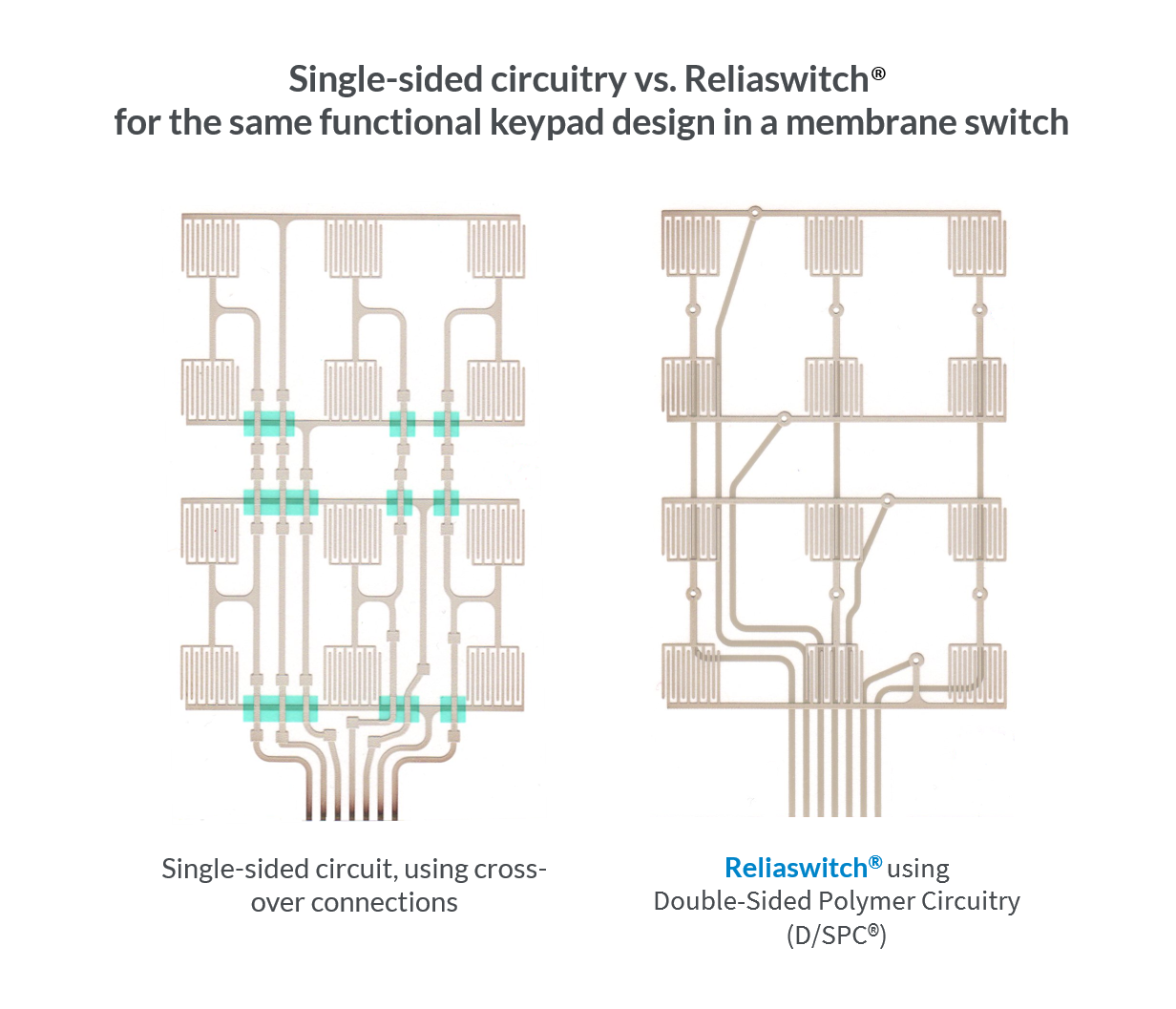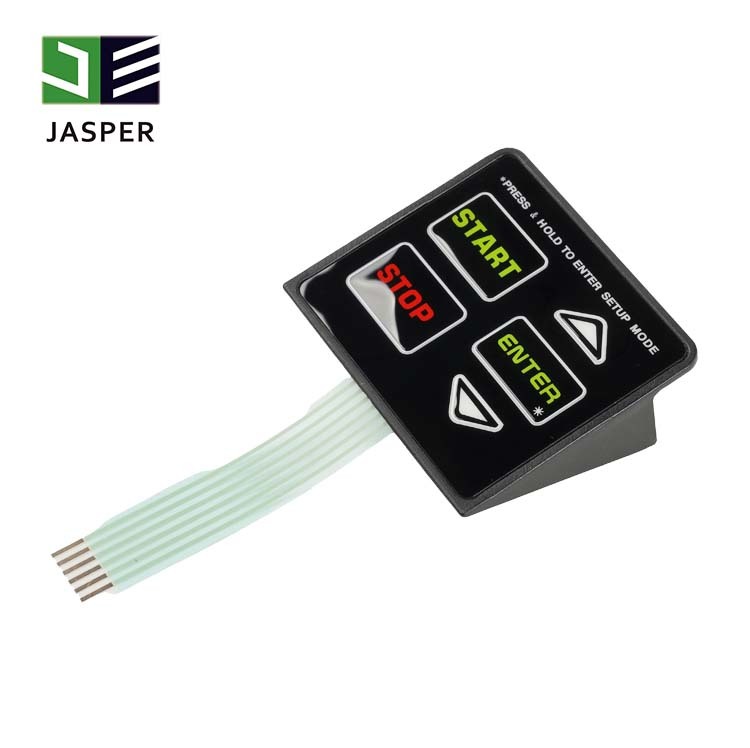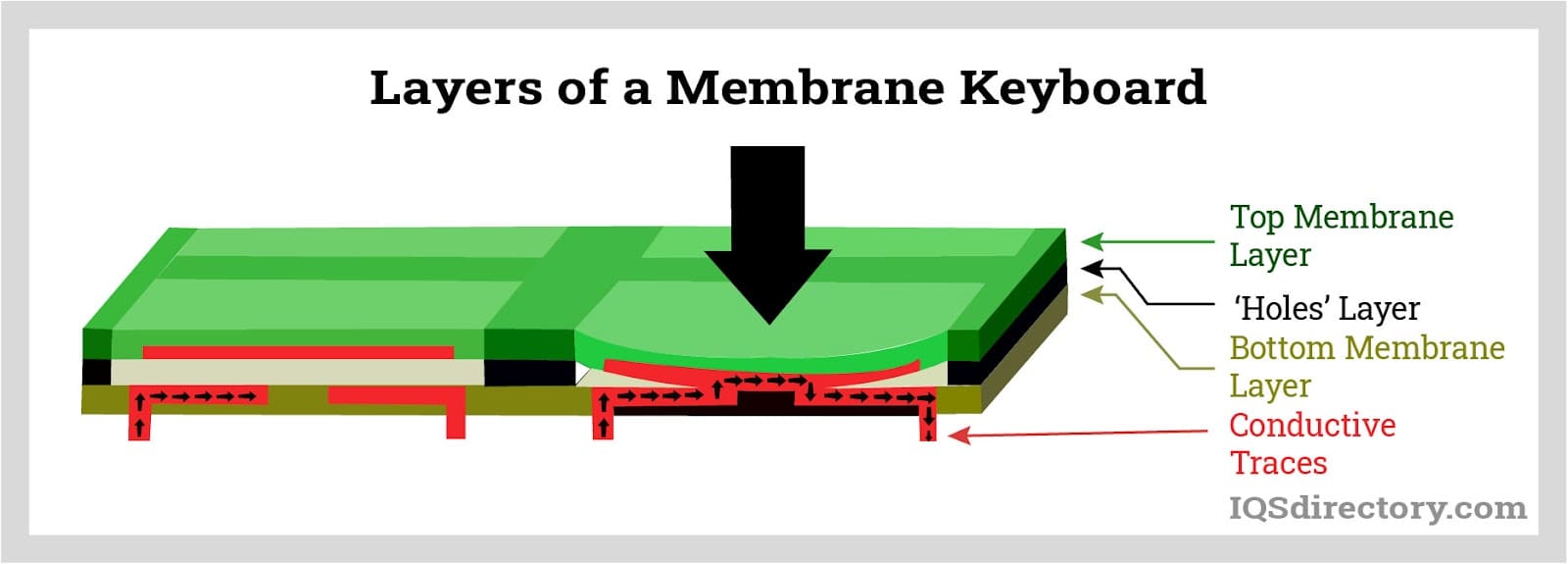The Production Refine Behind Membrane Switch: What You Required to Know
The production procedure behind membrane layer switches combines cautious style, product selection, and high quality control. It begins with recognizing the intricacies of membrane switch design and proceeds via different phases, consisting of material selections and printing methods. Each stage plays a vital function in making certain capability and durability. The intricacies of layer building and construction and the rigorous testing requirements may disclose insights that are not immediately noticeable. What exists past these fundamental aspects?
Recognizing Membrane Switch Over Design
Membrane layer buttons might appear simple at very first glimpse, their design includes detailed factors to consider that assure functionality and longevity. The design process begins with a complete understanding of individual requirements, including the interface's intended application and environmental variables. Functional designs is a crucial element, as the format must assist in simplicity of usage while making certain that tactile feedback satisfies user expectations.Moreover, the layering of components, such as graphic overlays, sticky layers, and conductive traces, should be exactly engineered. membrane switch. This split arrangement not just influences the switch's responsiveness yet additionally affects its durability. Interest is provided to the sealing methods utilized to safeguard against moisture and dirt, which might jeopardize performance. Additionally, design considerations reach looks, where color pattern and aesthetic clarity enhance individual experience. Inevitably, the design of membrane layer switches balances functionality, individual experience, and resilience, ensuring that they satisfy the needs of numerous applications effectively
Materials Used in Membrane Change Manufacturing
When picking materials for membrane button production, it is essential to contemplate both performance and longevity. The primary products include polyester and polycarbonate films, which give versatility and strength. These films are frequently coated with sticky to guarantee correct bonding to substrates. Conductive inks, normally made up of silver or carbon, are essential for producing electrical links within the switch, enabling reliable operation.Additionally, a safety layer, such as a hard coat, is often related to enhance scrape resistance and long life. The selection of backing material, such as acrylic or foam, can substantially affect the button's responsive feeling and overall individual experience. In addition, various environmental elements, including temperature level and humidity, should assist product choice to guarantee peak efficiency in specific applications. Eventually, the ideal mix of materials adds to the membrane switch's performance and life-span, making notified selections necessary for manufacturers.
The Printing Refine: Creating Graphics and Text
The printing process in membrane layer switch manufacturing plays a substantial role in generating top notch graphics and text. Numerous graphic design methods are used to assure visual appeal and functionality, while mindful ink choice approaches are crucial for toughness and efficiency. Understanding these aspects is fundamental for accomplishing finest outcomes in membrane switch design.
Graphic Layout Techniques
Graphic layout strategies play a crucial duty in the printing process of membrane layer buttons, as they define just how graphics and text will eventually appear on the end product. Effective visuals design involves the calculated usage of font styles, shades, and layouts to enhance readability and visual charm. Designers typically utilize vector graphics for scalability, guaranteeing that images stay sharp at different sizes. In addition, attention to comparison and positioning is crucial, as it affects individual communication and visual top quality. The incorporation of branding components, such as logo designs, need to be taken care of with like keep brand stability. On the whole, thoughtful visuals layout methods add significantly to the capability and attractiveness of membrane layer buttons, influencing individual experience and product efficiency.
Ink Option Methods
Picking the appropriate ink is crucial for achieving the desired aesthetic high quality and toughness in membrane switch manufacturing. Various ink kinds are utilized, consisting of solvent-based, water-based, and UV-curable inks. Each kind supplies distinctive attributes, such as attachment, resistance, and versatility to ecological variables. Solvent-based inks are often favored for their durability and dynamic shades, while water-based inks are much more eco-friendly but may have restrictions in attachment. UV-curable inks give fast healing and durable efficiency. Furthermore, shade matching techniques guarantee that the selected inks straighten with layout specifications. Ultimately, the choice of ink have to take into consideration factors such as application approach, substrate compatibility, and end-use needs to achieve premium lead to membrane layer switch graphics and message.
Layer Building and Setting Up

Material Choice Refine
A mindful choice of products is vital in the production procedure of membrane layer buttons, as navigate to this site it straight affects performance and durability. The key materials made use of include polyester, polycarbonate, and different conductive inks. Polyester is commonly favored for its exceptional resistance to chemicals and abrasion, making it ideal for extreme environments. Polycarbonate, on the various other hand, offers exceptional clearness and effect resistance, which is beneficial for applications calling for visibility and robustness. Conductive inks, commonly made up of silver or carbon, are essential for producing reliable electric paths. Furthermore, the option of glue products influences the general stability of the switch - membrane switch. Assessing aspects such as environmental exposure, tactile responses, and visual demands guides producers in choosing the ideal products for their certain applications
Layer Attachment Techniques
Sticking layers in membrane switch building and construction is an important procedure that assures capability and long life. Various attachment techniques are utilized to protect optimal bonding between layers, which typically consist of using adhesives, heat, and pressure. Pressure-sensitive adhesives (PSAs) are typically made use of for their simplicity of application and prompt bonding capacities. Furthermore, thermal bonding strategies can be used, where heat is utilized to turn on glue residential properties, protecting a solid bond. The selection of attachment approach mostly depends on the materials involved and the certain application needs of the membrane button. Proper positioning and consistent application of adhesives are important to protect against issues, securing the switch operates properly throughout its designated life expectancy.
Quality Assurance Measures
Ensuring high quality control during the layer building and construction and assembly of membrane layer buttons is crucial for maintaining efficiency and integrity. This process generally entails a number of essential actions, including detailed evaluations at each phase of production. Makers utilize advanced testing methods, such as additional hints peel examinations and adhesion evaluations, to confirm the integrity of layer bonds. Furthermore, aesthetic evaluations are conducted to recognize any type of problems in printing or material inconsistencies. Ecological problems, such as temperature level and humidity, are thoroughly kept an eye on to guarantee ideal curing and attachment. Normal calibration of equipment assists keep accurate manufacturing standards. By executing these quality assurance steps, producers can substantially decrease the threat of item failing, guaranteeing that the final membrane layer switches fulfill the called for specifications and client assumptions.
Examining and Quality Assurance Procedures

Technologies in Membrane Change Technology
As innovations in technology proceed to evolve, membrane buttons are taking advantage of innovative developments that improve their functionality and user experience. One noteworthy development is the combination of capacitive touch innovation, which enables more instinctive and responsive user interfaces. This change not only enhances looks however likewise reduces mechanical wear and tear, prolonging the life expectancy of the switches.Additionally, advancements in visuals overlay products have actually caused enhanced durability and resistance to ecological elements such as moisture and UV light. These materials currently offer improved quality and illumination, additional raising the aesthetic appeal.Furthermore, the unification of smart modern technology is changing membrane switches over into interactive control board, making it possible for connectivity with IoT devices. This connectivity fosters a smooth user experience, leading the way for applications in various industries, from health care to customer electronic devices. Collectively, these developments position membrane switches over as critical components in modern-day device style.
Often Asked Questions
For how long Does the Membrane Layer Switch Over Manufacturing Refine Take?
The duration of the membrane switch production process can vary considerably. Factors such as intricacy, products utilized, and production quantity impact timelines, with common production varying from a couple of days to several weeks for completion.
What Are the Common Applications for Membrane Switches?
Membrane buttons are generally made use of in different sectors, including automotive controls, family appliances, clinical tools, and customer electronic devices (membrane switch). Their flexibility and sturdiness make them optimal for applications calling for easy to use user interfaces and dependable efficiency in diverse atmospheres
Can Membrane Switches Be Customized for Certain Requirements?

What Is the Life-span of a Regular Membrane Layer Switch?
The life-span of a normal membrane layer switch varies, but usually, it ranges from 1 to 5 million cycles. Elements such as usage, setting, and worldly quality greatly influence resilience and total efficiency over time.

Are Membrane Switches Ecologically Friendly?
The ecological kindness of membrane switches over differs. Some materials made use of may not be recyclable, while others can be environment-friendly. The total influence depends upon making materials and techniques, demanding careful consideration during selection and disposal. The manufacturing process behind membrane layer switches over combines cautious design, product choice, and top quality control. It begins with comprehending the ins and outs of membrane button style and advances via numerous stages, including material selections and printing strategies. When choosing materials for membrane layer switch production, it is essential to ponder both performance and resilience. A cautious option of products is important in the production process of membrane buttons, as it directly affects capability and toughness. The choice of attachment technique greatly depends on the products entailed and the certain application needs of the membrane button.